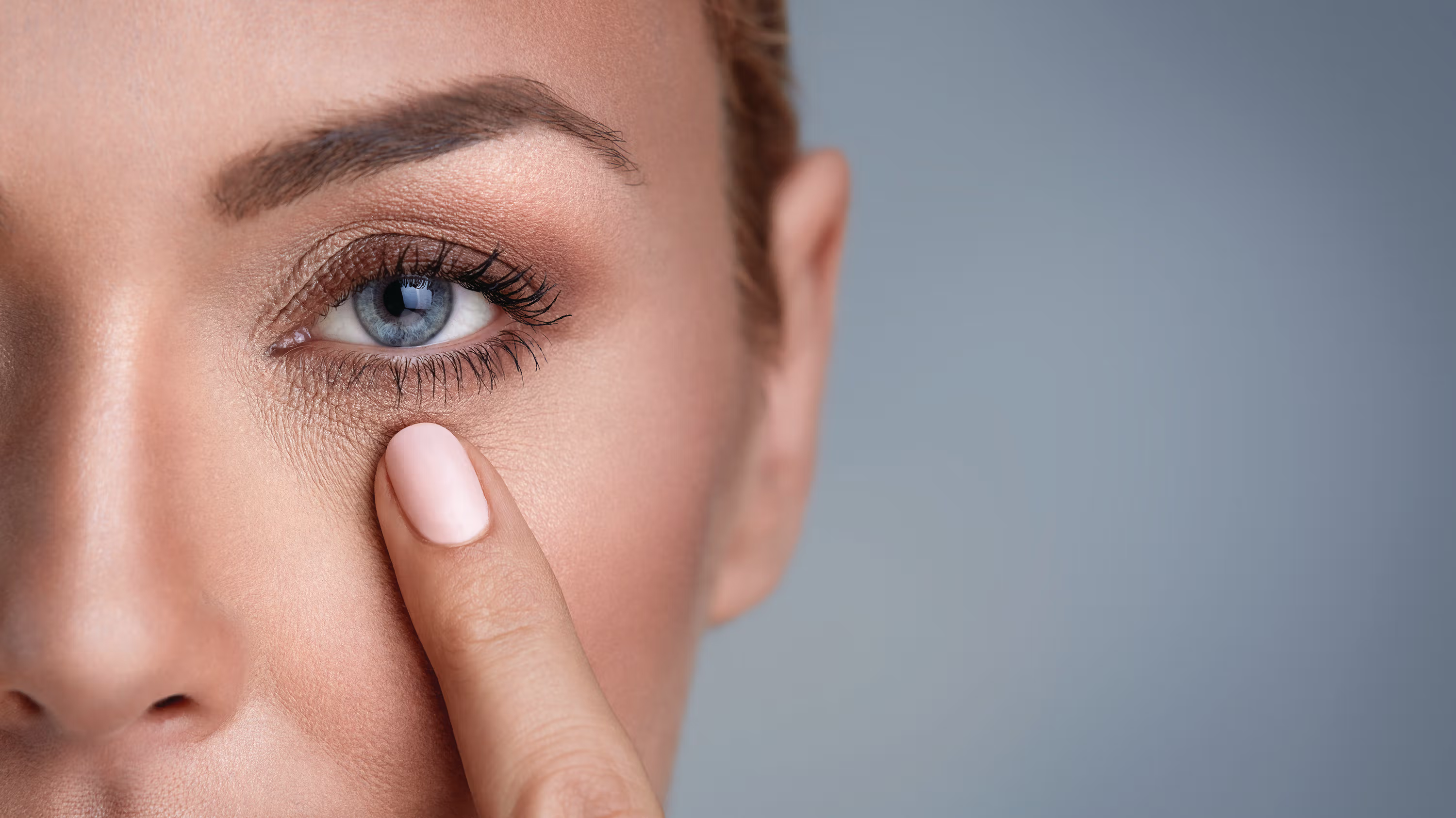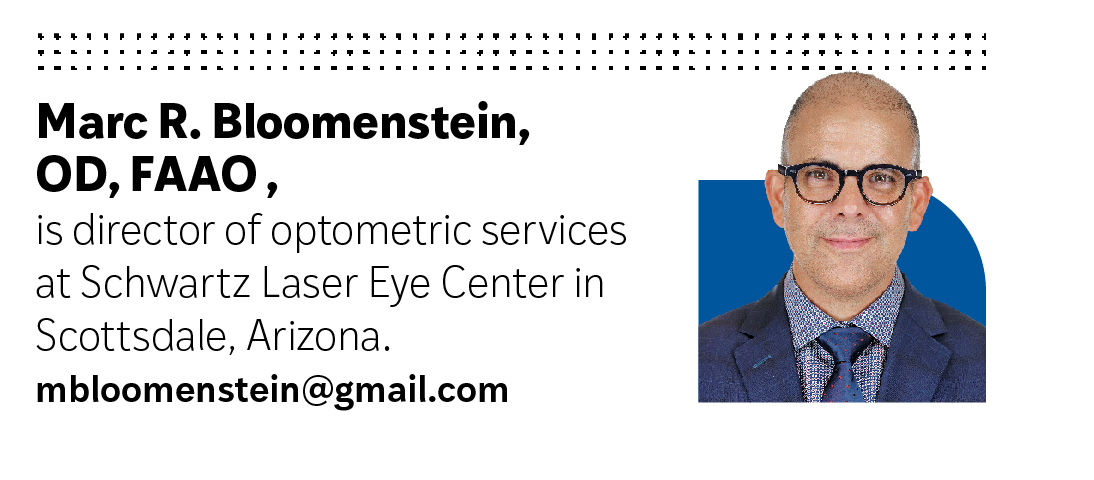Aesthetics and eye care are a natural fit
Go beyond flattering frames by enhancing appearance from the exam chair


Managing patients in this post-COVID (PC)—or as I like to say post-vid (PV)—era has created new opportunities for eye care clinicians. They have seen a surge in the use of virtual “everything,” and that also correlates to eye examinations. Moreover, wearing masks for the past year has induced mask-associated dry eye and created a general sense of anxiety about the appearance of said organs.
Think about the way patients have been communicating of late—not with the mouth but with hand gestures and eyes. Although eye care practitioners may think that all attention focuses on the eyes, the current climate has created even more pressure to make those peepers look good. Hence, eye care providers must embrace eyesthetics.
Eyesthetics during the exam
Eyesthetics is the practice of collaborating with the inner Bob Mackie or the Bobbi Brown buried inside all of us. ODs must offer their patients more to help these fashion globes pop instead of remaining hidden behind eye-muting photochromic spectacle lenses. The collaboration of style and optometry is an expected union. Yet how much time do ODs spend talking about facial shapes and new frame trends?
I do not recall spending any time focusing on a color palette that will help to bring out the hazel in a patient’s eyes while masking the conjunctival chalasis. I get it—ODs are most likely thinking this is why they have an optician or a subscription to Vogue. That can work. However, a lot can be done in the exam chair prior to enhancing eyesthetics.
Treating patients to an “eye spa” day can serve as a therapeutic treatment for other eye-related maladies. Think of patients who have dry eyes. One of the first things they reach for is drops to get the red out. There is a reason Visine is a staple in patients’ man bags and purses. The appearance of red eyes is a telltale sign that things are not healthy and warrant treatment.
Patients will go all Silence of the Lambs and “covet” the advice of the pharmacist, the neighbor, or simply whatever commercial brings them joy. This is the best time for ODs to recommend dry eye treatments to help reduce and remove the inflammatory impetus for the redness—one option is a thermal procedure with an emphasis on meibomian glands. Moreover, offer patients OTC remedies to alleviate the red—such as brimonidine tartrate ophthalmic solution 0.025% (Lumify; Bausch + Lomb)—discuss cosmetics that are dry eye friendly, give advice on better lash extensions, or prescribe bimatoprost ophthalmic solution 0.03% (Latisse; Allergan) instead of the thick nylon that some have glued to their lash follicles.
Now what?
Practicing in a cataract refractive setting has provided me with an acute sense of what patients would like to change about their eyes. Although most of the focus (yes, that was a pun; stay with me) is on refractive error, a lot of discussion circles on, “Now what?” Specifically, patients ask, “Now, what can I do about the lids? What I can do about the bags under these ojos?” Another favorite, and likely one of yours, is the patient who says, “I couldn’t see these wrinkles before I had surgery. What did you do to me?”
In the wayback time, you now PV, I would discuss blepharoplasty or even neurotoxins to help take the edge off the Shar-Pei–inspired look that their journey provided. In fact, some states allow ODs to participate in neurotoxin treatments to help patients. Other offerings that may suit your practice are the use of radio frequency or intense pulsed light to tighten the collagen in the face as well as remove superficial blood vessels. Perhaps start by offering oxymetazoline hydrochloride ophthalmic solution 0.1% (Upneeq; Osmotica Pharmaceuticals), a recently approved prescription alpha adrenergic agonist daily drop indicated for acquired blepharoptosis. This drop makes the eye pop open. I offer Upneeq to patients with "now what?" questions, patients who have obvious lid droop, and even younger patients who have gone to great lengths to decorate their eyes.
Look, I get it, PV we are all most likely still wearing our scrubs during the week and choosing between your 5 Les Tien hoodies to go with your Aviator Nation sweats. However, the one thing we all can agree on is that we communicate with our eyes and thus we should collaborate with our patients to help them love that journey for themselves.
Newsletter
Want more insights like this? Subscribe to Optometry Times and get clinical pearls and practice tips delivered straight to your inbox.
